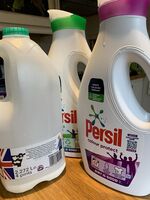HDPE (2): Difference between revisions
re-structure of page |
No edit summary |
||
| (One intermediate revision by the same user not shown) | |||
| Line 1: | Line 1: | ||
[[File:Symbol Resin Code 2 HDPE.svg|left|150px]] | {{AdSide}}[[File:Symbol Resin Code 2 HDPE.svg|left|150px]] | ||
| Line 41: | Line 41: | ||
==References== | ==References== | ||
<references /> | <references /> | ||
{{AdBottom}} | |||
Latest revision as of 06:49, 16 May 2023

HDPE (High Density Polyethylene) is a type of plastic often used in bottles and is captured as HDPE (2) in WikiWaste
HDPE (2) is a thermoplastic polymer made from petroleum. It is one of the most versatile plastic polymers and thus used in a wide variety of applications such as[1]:
- plastic bottles (milk, bleach, Liquid washing containers),
- cutting boards,
- Utility piping
- cable insulation
- toys
- Ice cream tubs
- picnic ware
- household and kitchen ware
It is known for its outstanding tensile strength and large strength-to-density ratio,; HDPE (2) plastic has a high impact resistance and melting point[1], [2].
It can also be found in some rather unusual places[1]:
- wood plastic composites
- Snowboards
- plastic surgery, specifically skeletal and facial reconstruction
HDPE (2) is widely recycled via kerbside collection systems and can be recycled into pens and detergent bottles.
- HDPE Examples
-
HDPE bottles
-
Freshly Extruded 800mm HDPE Pipe
-
Milk crate
-
HDPE Construction safety net
Properties
- Stiffness, strength, toughness, barrier to gas and moisture
Common Applications
- Water pipes, gas pipelines, electrical and communications conduits, buckets, milk and juice bottles, grocery bags, some toiletry bottles




